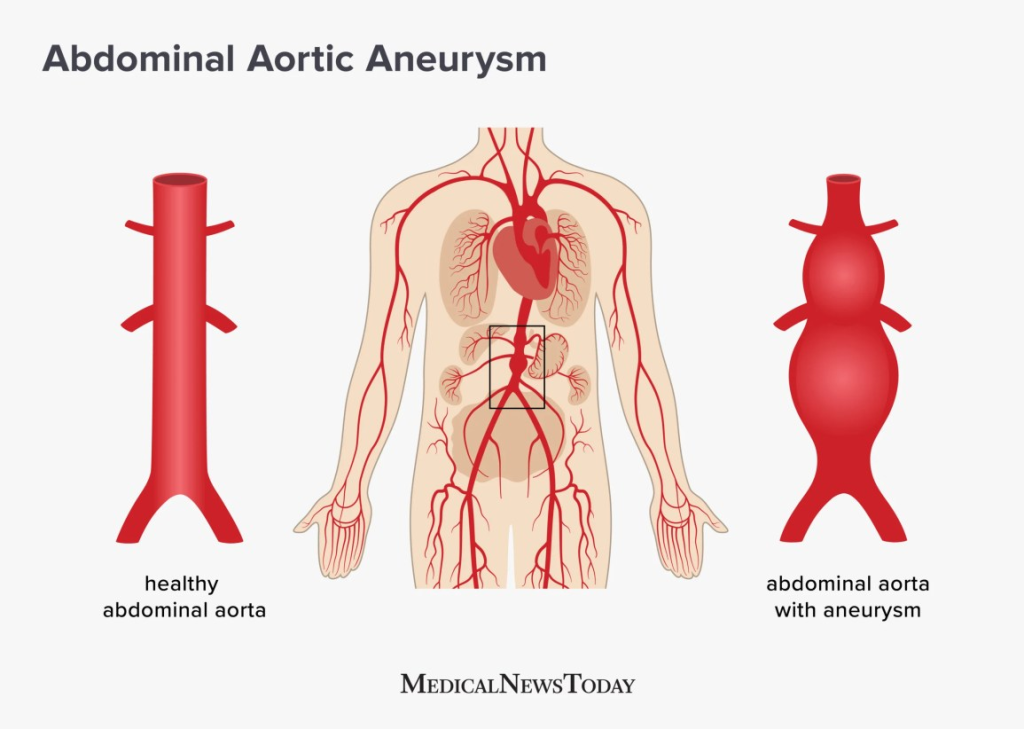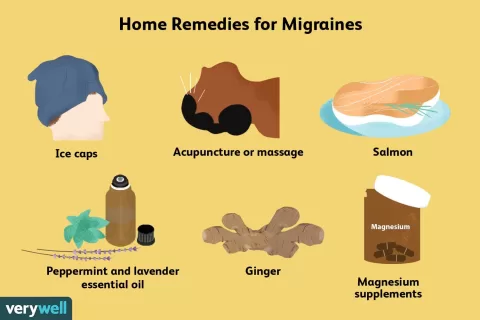Abdominal aortic aneurysm (AAA) is a critical health condition that involves the enlargement of the abdominal aorta, often due to a weakness in the arterial wall. This condition can lead to severe complications, including the risk of rupture, which can be life-threatening. Recognizing the symptoms of AAA, such as back pain, abdominal discomfort, and the presence of a pulsating mass, is vital for timely diagnosis and treatment. Various treatment options are available, ranging from medical therapy aimed at managing blood pressure and cholesterol to AAA surgery for larger or symptomatic cases. Regular abdominal aortic aneurysm screening is especially important for those at risk, ensuring early detection and better patient outcomes.
An abdominal aortic aneurysm (often abbreviated as AAA) is sometimes referred to as an aortic dilation in the abdominal region. It is characterized by a localized enlargement of the aorta, which can occur due to several factors, including atherosclerosis and genetic predispositions. Individuals may experience various symptoms that necessitate immediate medical attention, highlighting the importance of awareness surrounding this vascular condition. The management of an abdominal aortic aneurysm encompasses both non-invasive and surgical interventions, depending on the aneurysm’s size and severity. Therefore, understanding this condition, including its symptoms, treatment options, and the significance of regular screening, is crucial for effective prevention and care.
Understanding the Symptoms of Abdominal Aortic Aneurysm
The symptoms of an abdominal aortic aneurysm (AAA) can often be subtle or mistaken for other health issues, making awareness crucial. The most common symptoms include persistent back pain, abdominal discomfort, and the perception of a pulsating mass in the abdomen. Patients may not experience these symptoms until the aneurysm has reached a significant size or has ruptured, leading to life-threatening situations. Therefore, recognizing these signs and seeking immediate medical attention is essential for effective management.
In some cases, individuals with an AAA may experience syncope or sudden dizziness, particularly if the aneurysm has ruptured. This highlights the importance of screening and regular check-ups, especially for high-risk individuals such as older adults or those with a history of smoking. Understanding the symptoms associated with abdominal aortic aneurysms can empower patients to advocate for their health and prompt timely interventions.
Diagnosis and Imaging Techniques for AAA
Accurate diagnosis of an abdominal aortic aneurysm involves a combination of clinical evaluation and advanced imaging techniques. Healthcare providers typically start with a physical examination and may order imaging tests such as ultrasound or CT scans to confirm the presence of an AAA and assess its size. These imaging modalities are crucial for determining the appropriate management strategy, as they provide detailed information about the aneurysm’s characteristics.
The role of imaging in AAA management cannot be overstated. Regular imaging is often recommended for monitoring the size of the aneurysm, especially in asymptomatic patients. This ongoing assessment is vital for deciding whether medical therapy or surgical intervention is necessary. As technology advances, imaging techniques continue to improve, allowing for more precise evaluations and better patient outcomes.
Innovative Treatment Options for Abdominal Aortic Aneurysm
Treatment approaches for abdominal aortic aneurysms vary significantly based on the aneurysm’s size, growth rate, and symptoms. For small, asymptomatic AAAs, a strategy known as ‘watchful waiting’ may be employed, which involves regular monitoring and lifestyle modifications to manage risk factors. Conversely, larger or symptomatic aneurysms often require more aggressive treatment, including medical therapy aimed at controlling blood pressure and cholesterol levels to slow aneurysm growth.
Surgical intervention remains a mainstay in the treatment of significant AAAs. Patients may undergo open surgical repair or minimally invasive endovascular aneurysm repair (EVAR). Open surgery involves removing the damaged section of the aorta and replacing it with a synthetic graft, while EVAR allows the placement of a stent graft through small incisions, typically resulting in shorter recovery times. Understanding the latest advancements in treatment options can profoundly impact patient outcomes and quality of life.
The Importance of AAA Screening Guidelines
Screening for abdominal aortic aneurysms is a critical component of preventative healthcare, especially for high-risk populations. Current guidelines recommend that men aged 65 to 75, particularly those with a history of smoking, undergo one-time ultrasound screening. This proactive approach aims to identify AAAs before they reach a size that poses a significant risk of rupture, allowing for timely intervention and treatment.
Regular follow-up screenings may be necessary based on the size of the aneurysm and the patient’s overall health. The importance of adhering to these guidelines cannot be overstated, as early detection can lead to better management outcomes. Healthcare providers must educate patients about the risks associated with AAAs and the benefits of screening, ensuring that those at risk are monitored appropriately.
Recent Advances in AAA Research and Management
Recent studies have made significant strides in understanding abdominal aortic aneurysms, particularly concerning their management and treatment. Research has shown a concerning trend in the rise of both ruptured and intact AAAs, highlighting the need for increased awareness and improved screening protocols. Innovations in surgical techniques and medical therapy for AAA are also evolving, with ongoing research focusing on enhancing patient outcomes and minimizing risks associated with surgical procedures.
Additionally, specialists emphasize that prognosis for abdominal aortic aneurysms heavily depends on factors such as the aneurysm’s size and location, reinforcing the importance of individualized care. Continued research efforts aim to refine treatment guidelines and develop new medical therapies that can effectively manage AAA growth. As the understanding of this condition evolves, so too does the potential for improved patient care and outcomes.
Frequently Asked Questions
What are the common symptoms of an Abdominal Aortic Aneurysm (AAA)?
Common symptoms of an Abdominal Aortic Aneurysm include persistent back pain, abdominal pain that can be mistaken for indigestion, a pulsating mass in the abdomen, and sudden dizziness or fainting, particularly in the case of rupture.
What is the recommended treatment for an Abdominal Aortic Aneurysm?
Treatment for an Abdominal Aortic Aneurysm typically depends on its size and symptoms. Options include watchful waiting for small, asymptomatic AAAs, medical therapy to manage blood pressure and cholesterol, and surgical intervention for larger or symptomatic aneurysms, which may involve open surgical repair or endovascular aneurysm repair (EVAR).
How is Abdominal Aortic Aneurysm diagnosed?
Diagnosis of an Abdominal Aortic Aneurysm is usually confirmed through imaging techniques such as ultrasound or CT scans, which help assess the aneurysm’s size and monitor its progression.
Who should undergo screening for Abdominal Aortic Aneurysm?
Men aged 65 to 75, especially those with a history of smoking, are recommended to undergo one-time screening for Abdominal Aortic Aneurysm using ultrasound to ensure early detection and timely intervention.
Is medical therapy effective for managing Abdominal Aortic Aneurysms?
Yes, medical therapy can be effective in managing Abdominal Aortic Aneurysms by helping to lower blood pressure and cholesterol levels, which may slow the growth of the aneurysm and reduce the risk of complications.
| Section | Key Points |
|---|---|
| Introduction | AAAs are abnormal expansions of the abdominal aorta, posing health risks, especially if ruptured. |
| Definition | Localized enlargement of the aorta in the abdomen, often due to atherosclerosis. |
| Symptoms | Common symptoms include back pain, abdominal pain, pulsating mass, and syncope. |
| Diagnosis and Imaging | Diagnosis often involves imaging techniques like CT scans and ultrasounds. |
| Treatment Approaches | Includes watchful waiting, medical therapy, and surgical options (open repair or EVAR). |
| Recent Developments | Ongoing research highlights trends in AAA management and factors affecting prognosis. |
| Screening Guidelines | High-risk groups, especially men aged 65-75 who smoked, should undergo screening. |
| Conclusion | Increased awareness, timely interventions, and modern treatments are crucial for managing AAAs. |
Summary
Abdominal Aortic Aneurysms (AAAs) are critical vascular health issues that require understanding of their symptoms, treatment, and screening guidelines. These aneurysms can lead to severe complications if not detected early, making awareness and timely intervention essential. With advancements in medical management and surgical techniques, the prognosis for patients with AAAs has improved significantly. Regular screenings for high-risk individuals play a crucial role in early detection, ensuring better outcomes and mitigating the risks associated with this serious condition.
The content provided on this blog (e.g., symptom descriptions, health tips, or general advice) is for informational purposes only and is not a substitute for professional medical advice, diagnosis, or treatment. Always seek the guidance of your physician or other qualified healthcare provider with any questions you may have regarding a medical condition. Never disregard professional medical advice or delay seeking it because of something you have read on this website. If you believe you may have a medical emergency, call your doctor or emergency services immediately. Reliance on any information provided by this blog is solely at your own risk.








